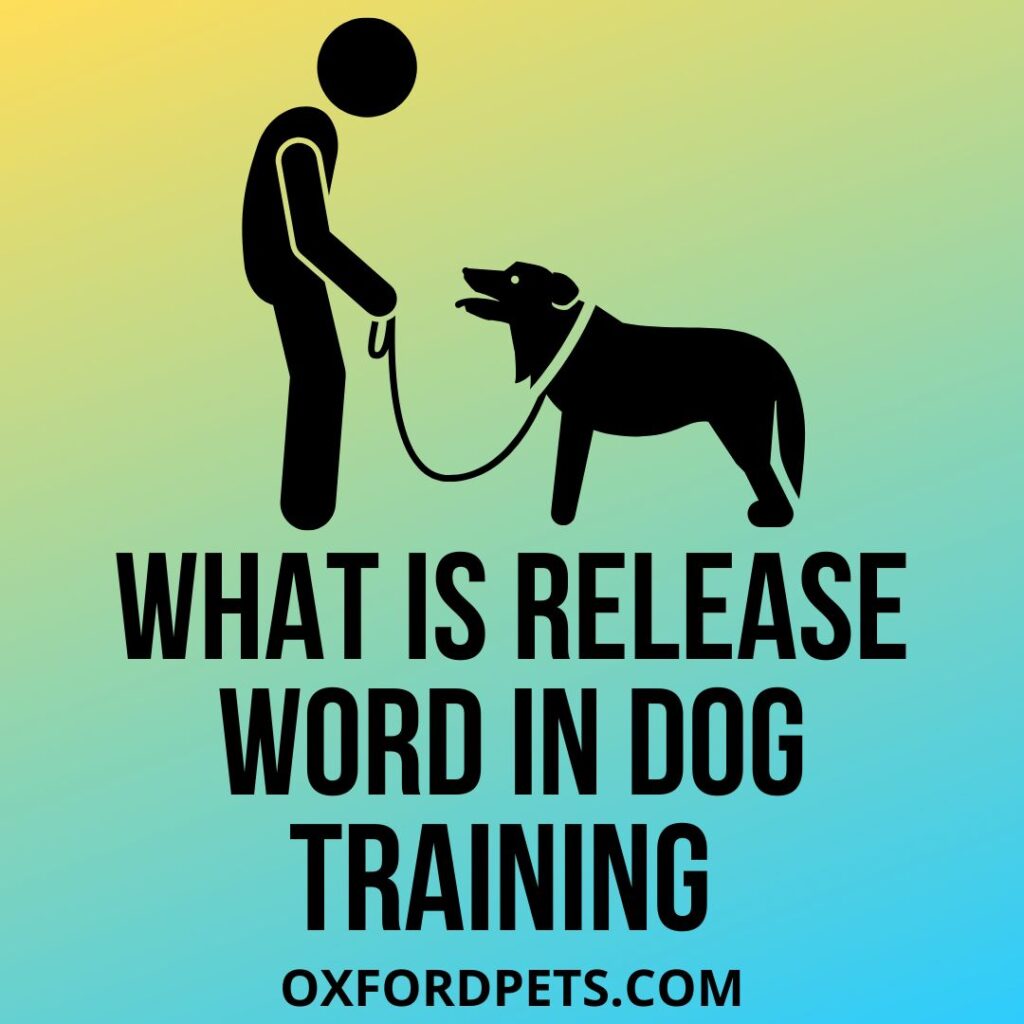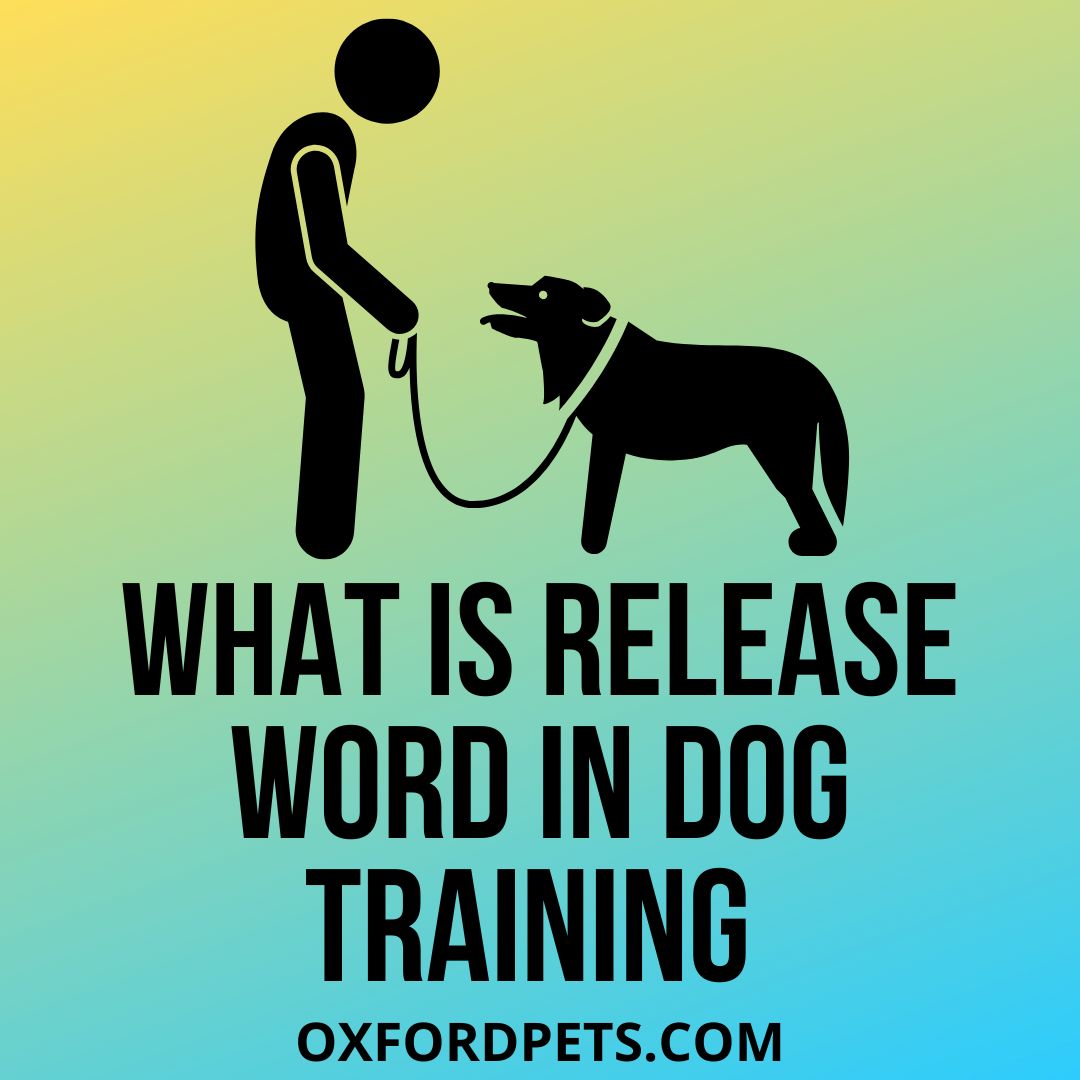The release word is very very important in your canine’s training. It helps you to understand your pooch better. Moreover, when you teach the command, your canine is in more control and he will know what you expect from him.
Also, your dog will become more predictable. So, let’s get started with the “Release word in dog training terminology and its importance.
Contents
- Importance of the release word
- 10 Best release words for dogs
- How to teach release commands to your dog?
- Problems and proofing behaviour
- Some Essential Dog Training Commands
- When to use the release cue?
- Why should I teach the release command?
- Criticism of the Release Command
- Final words
- Frequently asked questions
Importance of the release word
Every command has its own expectations with your dog for a specific period of time. If you don’t train your canine with a release command, it can be something irritating and embarrassing for you. Moreover, many owners consider it disobedience.
Every command must have a beginning and an end. Stay command will make your canine stay but what will release him/her?
Many canine trainers do not teach the stay command because every command must have a release word to break the stay command. Moreover, many owners use the release command for various occasions.
They train their canines to sit and look at them before :
- They can run without a leash
- Can greet canines or people
- Can jump out of the car
- They can start to eat
- Going through the door
This gives you more control over your pooch. Also, you can prevent him from randomly doing things and make him more predictable.

10 Best release words for dogs
There are many release words in dog training. Here are some of the best and most common release words for dogs.
Usually, people Consider 5 or 7 basic commands for dog training such as Sit, Down, Stay, Come, Heel, Off, and No. We will further break down them into 10 commands, No, Good, Okay, Let’s Go, Right Here, Sit, Off, Down, Wait, Leave It. let’s Discuss them in detail.
No
This word makes your canine understand not to do a particular thing. However, you should avoid using this word too often. You must use it constantly to make him understand to avoid the thing.
Good
Many pet parents use this release term to appreciate them for their pet’s choice or let them know that it is the right thing to do. Moreover, they say it in a happy tone accompanied by physical affection.
Okay
Okay, word permits your canine to understand and do whatever motion you have told him to do. Moreover, using the word continues to make the canine recognize the distinction between commands.
Let’s Go
This command is used to speak to transport from a stationary position. It lets your canine recognize that you are taking him along with you.
Right Here
When the canine is on a leash, it is vital to see no tension on the leash, and they’re free to move. The ‘Right Here’ command means that you may walk together with your puppy without pulling on the leash and get their interest.
If your canine restraints and pulls against the leash, say “No,” accompanied by “Right Here.”
Sit
This command is to make your canine sit. Moreover, you can use the hand sign to sit over the puppy’s head.
Off
This command is to allow the canine to put off the paws on the ground. Use the puppy or your body’s leash to put off the canine from you; avoid the use of your hands.
Down
The down command tells the canine to be in a laying down position. Moreover, you can combine the command with a hand sign.
Wait
Wait command is to tell the canine to wait for something until you tell them to do so. It is a very beneficial command. However, this command does not require the canine to sit or lay down; it is simply to wait.
Leave It
Leave it command is for speaking to the canine to leave whatever he is destroying. It is supposed for the canine not to present interest.
Often canines stay away temporarily to go back to the things they’re asked not to pay interest to. If you need the canine to stay absolutely away from the precise object, use this command multiple times.
How to teach release commands to your dog?
#1. Use his favourite toy
- Offer your canine his favourite toy by saying “take it”.
- If he is excited, let him play first then start training.
- However, don’t wait for too long. Your pooch may get bored
#2. Swap the toy with a treat
- When the toy is in his mouth, hold the treat near his nose.
- Once he releases the toy, give him a treat.
- Repeat this step multiple times.
#3. Include a verbal cue
- Use words like “drop it” to make him drop the toy.
- Say it clearly while keeping the treat in front of his nose.
- After some time, keep the treat away from the nose.
- Slowly increase the distance.
- Now try the command without the treat.
Leave it command
- Once your canine understands the drop it command, make him understand the leave it commands.
- This will prevent him from picking up the toy again.
Problems and proofing behaviour
While training your canine, never pull the toy from his mouth. Moreover, never try to forcefully open a canine’s jaws. This may convert a wrong message, making him consider it as a punishment.
Additionally, it can cause the canine to hold the toy even more tightly. This can be very harmful to the dog. Therefore, it is better to show some treats to tempt him.
Moreover, try to avoid rhymes like “drop” and “stop”. This may confuse your canine. Hence, try to use unique words and phrases that are positive to listen to.
To prove this, start training your canine regularly. Change the objects the canine is supposed to leave. Once your canines obey the command, you can be confident in your canine.
Some Essential Dog Training Commands



When to use the release cue?
- When you want your pooch to come out of the crate, out of the car, etc.
- Taking him off the leash
- Before he greets guests or other dogs
Why should I teach the release command?
This command is very useful for obedience training. Moreover, it helps your pooch to understand when he is free to roam. Additionally, it helps the canine to gain clarity during the training sessions. It makes the canine more focused.
Canines love appreciation. Uncertainty leads to bad training and anxiety in some cases. Using this command means you are mitigating the bad behaviour of your canine and making him obedient. Moreover, your pooch will not do random things and make you mad.
Criticism of the Release Command
Many individuals criticise dog owners who train their canines with release commands. They consider this strict.
But, the reality is, that this command has no relation to dominance. This is nowhere related to being alpha.
Final words
In conclusion, I would say that the release command is highly essential in obedience training. It makes your canine understand the true meaning of obedience.
It also helps to mitigate the possibility of bad behaviour and anxiety. Although some people criticise this command, I find nothing wrong with it.
I hope you enjoyed the article. I’ll be back soon with more informative and interesting pieces of writing. Till then, stay connected. Thank you.
Frequently asked questions
What is a good marker word in dog training?
The good marker words include- Excellent, Good, Super, Yes
What are marker words examples?
Super
Good
Yes
Yep
Click
Thumbs up for deaf dogs
Mouth or tongue click
5 commands every dog should know
Sit, stay, come, down, and leave are the most common commands that every canine must know. These commands make a huge difference in your relationship.
How long should a dog stay in place?
A dog should stay in place for at least 2 minutes. You can use distractions to keep him in place. Moreover, practice this until the canine can remain in place. Also, do not desire him to stay in place for more than 10 sec in the beginning.
